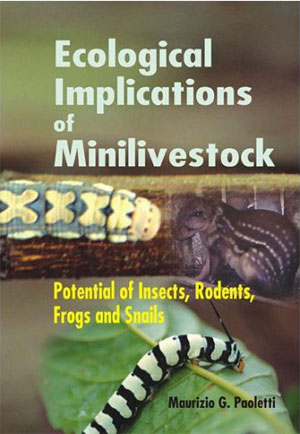I’m spending the week here for work and could not resist the temptation to do some advertising for Ethiopia’s Institute of Biodiversity Conservation, one of the world’s premier genebanks. So check out their website. And read a bit about them in the news.
It’s a wise grape that knows its own father
In the annals of plant breeding there are many stories that have achieved the status of Truth. Like the discovery of the original pink grapefruit, the parent tree marked forever with a P carved in its trunk, or the Red Delicious apple found in a ditch somewhere. Not quite so well known is the tale of Cardinal grapes. It is a delicious table grape that, so the story goes, was bred in 1939 at the Horticultural Field Station in Fresno, California, by E. Snyder and F. Harmon, by crossing Flame Tokay and Ribier.
Alas, it ain’t so.
Flame Tokay is normally considered a synonym — just another name — for Ahmer Bou Amer, an Algerian table grape. In the course of examining the DNA of a bunch of Mediterranean grape varieties, A. Akkak, P. Bocacci and R. Rotta 1 discovered that Flame Tokay could not possibly have been a parent of Cardinal, though they cannot show who is either. I don’t imagine E. Snyder or F. Harmon is still around to tell us what really happened. The researchers also prove that Flame Tokay is not merely a synonym of Ahmer Bou Amer but a mutant in at least one gene.
And in other grape news, two scientists in Switzerland are warning that the American Vitis rootstocks that saved the European wine industry from Phylloxera are threatening the survival of native wild European grapevines. 2 Nils Arrigo and Claire Arnold say that:
The regrouping of naturalised rootstocks in interconnected populations tends to create active hybrid swarms of rootstocks. The rootstocks show characters of invasive plants. The spread of naturalised rootstocks in the environment, the acceleration of the decline of the European wild grapevine, and the propagation of genes of viticultural interest in natural populations are potential consequences that should be kept in mind when undertaking appropriate management measures.
In other words, watch out.
The American rootstocks have already displaced wild grapes from the flood plains of the Rhone, and there may be worse in store.
Indians urged to grow seaweed
Indian fisherfolk are being trained as seaweed farmers in an effort to improve their incomes, according to a report in The Hindu. It says that seaweed has a market as a source of raw materials and that “seaweed cultivation would not harm the environment”. Seaweed can be used for food, fertilizer, medicines and other purposes, including biofuel, apparently. Fisherfolk on India’s coast are suffering as a result of indiscriminate exploitation.
Starbucks vs Ethiopia: a draw, for now
BBC News is reporting that coffee giant Starbucks has settled its dispute with the Ethiopian government over trademarks on coffee varieties. There is no direct benefit to growers in Ethiopia but the BBC says “it is hoped the deal will act as a catalyst to raise prices and improve the livelihoods of Ethiopian farmers”. It will take some time for the dust to settle and for the ramifications of the deal to become clear, but for now this looks like a reeasonably good outcome for all concerned.
Micro, mini, what’s the difference?
 Now, I know I’m a pedant, and biased, but for me, micro has always been smaller than mini. Cars, skirts, whatever; micro is smaller than mini. It’s, like, a rule. So when our friends at the Global Facilitation Unit sent flyers for a book called “Ecological Implications of Minilivestock: Potential Of Insects, Rodents, Frogs And Snails”, I was puzzled. Insects, frogs and rodents aren’t mini, they’re distinctly micro. Capybara and beaver are probably mini-rodents, but the rest are micro too. The reason, I guess, is that the term “microlivestock” had already been snaffled, by “Microlivestock: Little-Known Small Animals With a Promising Economic Future”, a wonderful book that I had the pleasure of reading, and writing about, when it came out in 1991. Except that BEDIM, the Bureau for Exchange and Distribution of Information on Minilivestock, that is responsible for this book, was “created circa 1990”. My brain aches just thinking about it.
Now, I know I’m a pedant, and biased, but for me, micro has always been smaller than mini. Cars, skirts, whatever; micro is smaller than mini. It’s, like, a rule. So when our friends at the Global Facilitation Unit sent flyers for a book called “Ecological Implications of Minilivestock: Potential Of Insects, Rodents, Frogs And Snails”, I was puzzled. Insects, frogs and rodents aren’t mini, they’re distinctly micro. Capybara and beaver are probably mini-rodents, but the rest are micro too. The reason, I guess, is that the term “microlivestock” had already been snaffled, by “Microlivestock: Little-Known Small Animals With a Promising Economic Future”, a wonderful book that I had the pleasure of reading, and writing about, when it came out in 1991. Except that BEDIM, the Bureau for Exchange and Distribution of Information on Minilivestock, that is responsible for this book, was “created circa 1990”. My brain aches just thinking about it.
Anyway, what you call them is besides the point. Small animals make big sense. They eat things big animals don’t. They are much more productive per unit area, and probably per unit food too. They’re nutritious, especially for people who cannot afford to eat macrolivestock. Ecological Implications of Minilivestock is not brand, spanking new, but then neither is the idea of eating insects. Indeed, the editor sent the information to the GFU in response to a tiny article here about a Kenyan researcher who was promoting insects as human food. As a contribution to broadening the biodiversity of productions systems and diets, we are happy to give it some attention.